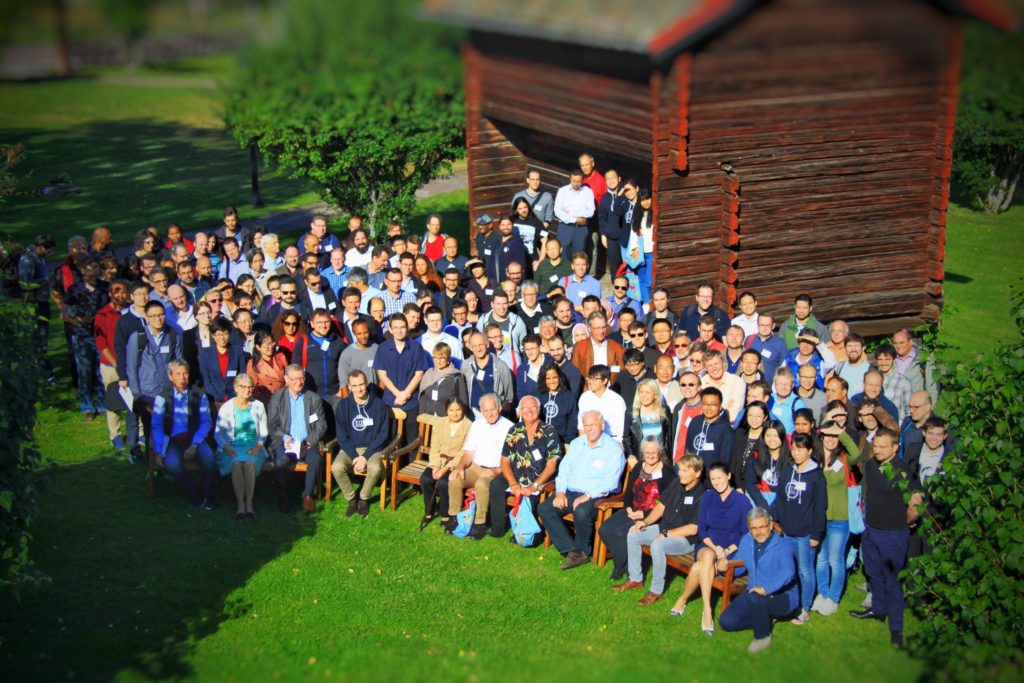The 17th International Conference on Density-Functional Theory and its Applications (DFT2017) took place in Tällberg, Sweden, in August 2017. The conference belongs to a series of biennial meetings, which have taken place in Paris (1995), Vienna (1997), Rome (1999), Madrid (2001), Brussels (2003), Geneva (2005), Amsterdam (2007), Lyon (2009), Athens (2011), Durham (2013), Debrecen (2015) and Tällberg (2017). DFT2017 covered a wide range of topics related with density functional theory. It brought together the foremost researchers from all around the world working on the development of the theory, extensions to new fields and providing a broad range of fascinating applications.
Conference Webpage:
https://www.dft2017.conf.kth.se/
Chair:
Prof. Dr. Levente Vitos, KTH Stockholm, Sweden
Organizers:
Prof. Dr. Olle Eriksson, Uppsala University, Sweden
Prof. Dr. Börje Johansson, KTH Stockholm, Sweden
Dr. Xiaoqing Li, Uppsala University, Sweden
Doc. Stephan Schönecker, KTH Stockholm, Sweden
Prof. Dr. Levente Vitos, KTH Stockholm, Sweden
International Scientific Committee:
Prof. Dr. Henry Chermette, Universite de Lyon, France
Prof. Dr. Claude A. Daul, University of Fribourg, Switzerland
Prof. Dr. Jose M. Garcia de la Vega, Universidad Autonoma de Madrid, Spain
Prof. Dr. Paul Geerlings, Vrije Universiteit Brussel, Belgium
Prof. Dr. Paola Gori-Giorgi, Vrije Universiteit Amsterdam, Netherlands
Prof. Dr. Miguel A. L. Marques, Martin-Luther-University Halle-Wittenberg, Germany
Prof. Dr. Ágnes Nagy, University of Debrecen, Hungary
Prof. Dr. Dennis R. Salahub, University of Calgary, Canada
Prof. Dr. Karlheinz Schwarz, Vienna University of Technology, Austria
Prof. Dr. David J. Tozer, University of Durham, United Kingdom
Prof. Dr. Levente Vitos, KTH Stockholm, Sweden

Description and summary:
In 2017, the broadest international meeting on DFT was organized for the first time in Scandinavia. Fifty three years passed since the fundamental theorems behind one of the most successful quantum theory of inhomogeneous electron gas were put forward. Already in its original form, DFT was suitable to explain a series of phenomena related to simple molecules and solids. It took nearly a quarter of century when it became robust enough to account for the magnetic ground state of a chunk of single crystal iron. More than a decade of future research was required in order to extend the scope of DFT to complex high-technology materials.
During the last half century, thousands of scholars dedicated their activities to various sectors of DFT modeling of materials. Although these activities were often led by a deep academic interest, the ultimate goal of the joint efforts has always been to build up an appropriate computational platform based on first-principles that can be put at the service of our society. Today researchers are establishing robust problem-oriented DFT computational tools which will be placed at the disposal of materials designers. As a matter of fact, many of these tools are already engaged in addressing a large number of questions driven by burning technological needs.
All aspects of materials development and usage, ranging from raw materials to production, design or waste disposal, are subject to social, economic and environmental considerations. Multiscale modeling connecting length scales from atomic- to micro-level provides the necessary platform for an intelligent design of materials with desired properties and controlled environmental footprint. Today, DFT turned to be the primary workhorse in studying materials at atomic- and nano-levels.
In 1998, the impact of DFT in materials characterization was recognized by the Royal Swedish Academy of Sciences awarding Nobel Prize to Walter Kohn. The DFT2017 Conference was dedicated to the memory of Kohn (1923 – 2016). We commemorated Robert G. Parr (1921-2017), and the former committee member Annick Goursot.
Researchers behind the enormous achievements in DFT and applications are DFT developers, solid state physicists and quantum chemists, and computational material scientists. These groups had prominent representatives at the DFT2017 conference. The thematic sections included time-independent excited state density-functional theory, time-dependent density-functional theory, density-functional theory of solids, application of density-functional theory in condensed matter physics and chemistry, strongly correlated systems and biomolecular modeling. The conference turned out to be a forum for the exchange of break-through ideas. It has given a strong impulse for further development of DFT and its application in materials modeling.
Poster awards:
The poster Trapping CO_2 by Adduct Formation with Azole-Based Carbenes presented by M. Merced Montero-Campillo was the winner of the Best Poster Award in Poster Session A.
The poster Quantum mechanics in metric space: distances between exchange-only correlations presented by Simone Marocchi was the winner of the Best Poster Award in Poster Session B.
The full program, the list of plenary speakers, invited speakers, contributed speakers, and poster presenters along with their abstracts, as well as the list of participants can be found here.
